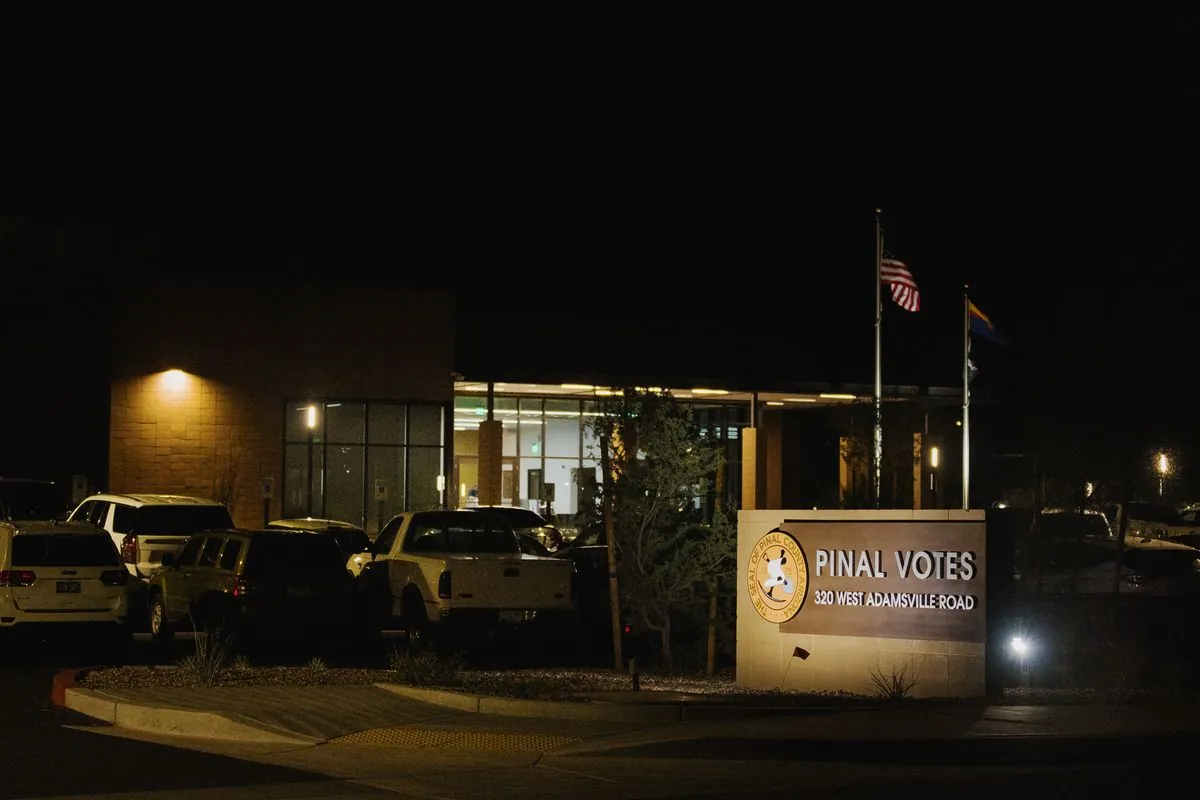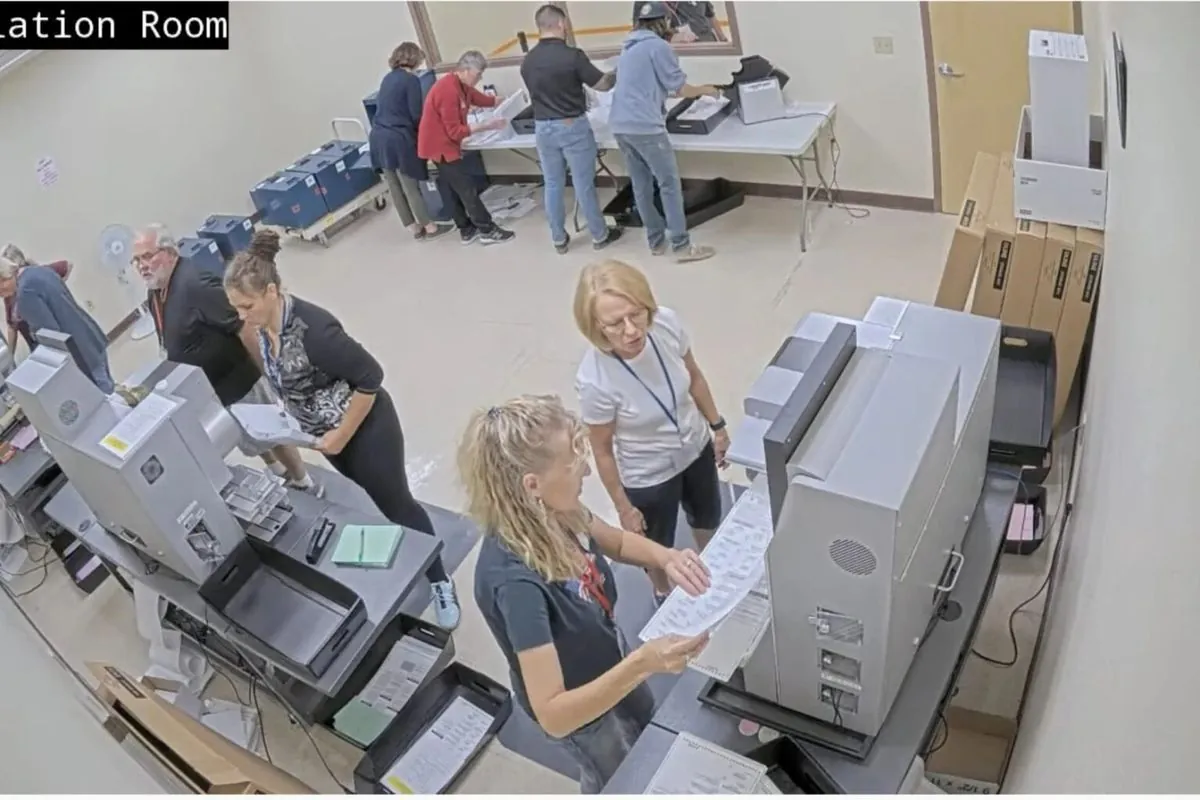Pinal County's $32M Election HQ: A Transparency Revolution
Pinal County, Arizona, combats election distrust with a new $32 million transparent headquarters. Officials implement radical measures, including GPS tracking and extensive surveillance, to rebuild voter confidence.

In the conservative enclave of Pinal County, Arizona, where skepticism about the 2020 election results lingers, officials are taking unprecedented steps to restore faith in the electoral process. The county, located in the central part of the state and part of the Phoenix-Mesa-Scottsdale Metropolitan Statistical Area, has invested $32 million in a new election headquarters designed to promote radical transparency.
This state-of-the-art facility, situated in Florence, the county seat, features extensive glass walls allowing observers to easily monitor vote-counting procedures. The building's design reflects the county's commitment to openness, with Dana Lewis, the Republican County Recorder, stating, "When you know in your soul there is nothing to hide, being open about the process is a no-brainer."
The new headquarters is a response to the rapid population growth Pinal County has experienced since the 1990s. As of 2020, the county's population stood at 425,264, making it one of the fastest-growing areas in Arizona. This growth, coupled with the need to address election integrity concerns, necessitated a significant upgrade in election infrastructure.

Among the innovative features implemented are:
- GPS devices attached to ballot transport cages
- Increased surveillance cameras inside and outside the facility
- Transparent grates for tabulator wiring to disprove internet connection theories
- A centralized monitoring system for ballot and equipment movement
These measures aim to combat persistent election falsehoods and provide concrete evidence to refute baseless claims. For instance, the GPS tracking system was introduced after rumors circulated in 2020 about abandoned voting equipment in a nearby desert town.
Jeff Serdy, a Republican County Supervisor, challenges skeptics: "Okay, what do we do to show you that we're not [hiding something]? We did it. Now, tell me where that is in this process that this stuff is happening?"
Pinal County's efforts mirror a nationwide trend of election officials striving to rebuild public confidence. In Mesa County, Colorado, Bobbie Gross, the Republican Clerk and Recorder, has initiated open houses and tours during live elections. Similarly, Maricopa County, home to more than half of Arizona's voters, has created educational materials and hosted facility tours to demystify the election process.
"We know there are people who are going to take things that they see out of context to bolster or inform their own narrative and that is part of the tension with being super transparent: It potentially leaves you vulnerable for misunderstanding in a moment when we know that absolutely any function in election administration can be weaponized."
Despite these efforts, challenges persist. In July 2024, during the primary election, Pinal County officials had to refute false claims about leaked election results. The incident led to the announcement of an external review of the county's election systems, with results expected in October 2024.
As Pinal County prepares for the November 2024 general election, officials hope their transparency initiatives will help restore trust. However, they acknowledge that combating deeply entrenched skepticism remains an uphill battle. The county's approach serves as a test case for whether radical transparency can effectively counter election misinformation in an era of heightened scrutiny and distrust.
Pinal County, founded in 1875 and named after the Pinal Mountains, has a rich history and diverse landscape. Home to parts of three Indian reservations and several state parks, including Picacho Peak State Park, the county's economy is primarily based on agriculture and mining, particularly copper. As part of Arizona's "Sun Corridor" megapolitan area, Pinal County continues to attract new residents seeking affordable housing and desert views, while also maintaining a significant retiree population in communities like Arizona City.
As the 2024 election cycle approaches, all eyes will be on Pinal County's new election headquarters, a beacon of transparency in the Arizona desert, to see if it can successfully navigate the choppy waters of election integrity and public trust.


































